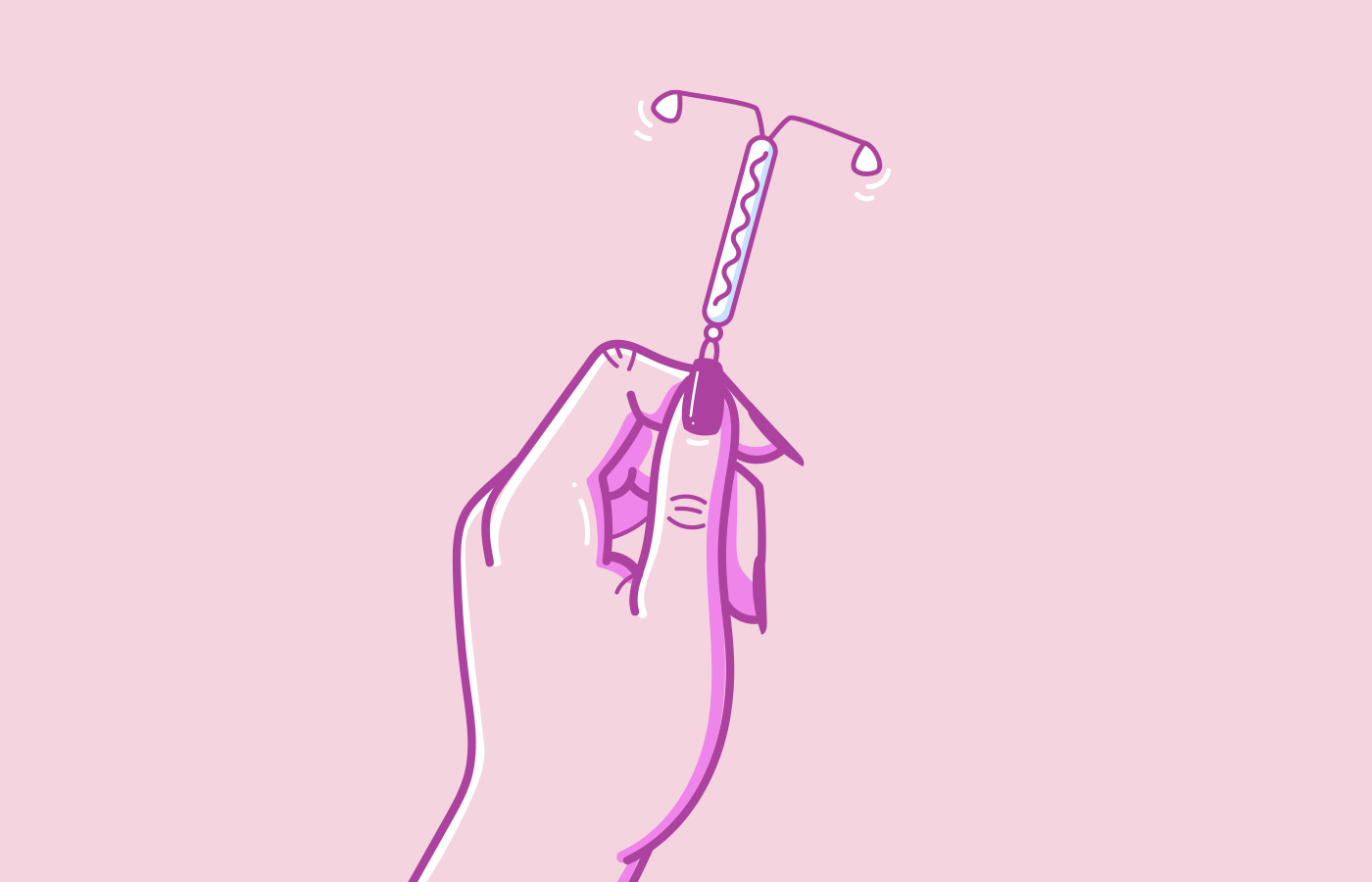Last updated on September 24th, 2020
The hormonal IUD—commonly known by the brand name Mirena®—is a small, plastic T-shaped device that is inserted into the uterus. It is considered a long-acting form of contraception as it can remain in place for a number of years. It releases small amounts of a progestin hormone into the uterus. Progestins are synthetic substances that are similar to progesterone, but not identical. They mimic some of the effects of progesterone—such as reducing bleeding—but they don’t have all of the same actions and benefits that progesterone does.
How it works
The progestin-releasing IUD works to prevent pregnancy by thickening the cervical mucus which prevents sperm from passing through, as well as by thinning the uterine lining and physically inhibiting fertilisation due to its placement.
It can suppress ovulation, but this is not its primary contraceptive mechanism. It is still possible to ovulate with this form of contraception; however, some cycles will likely be anovulatory. Anovulatory cycles generally occur more frequently within the first year after the IUD has been placed, likely as this is when the release of the progestin would be at its highest (it gradually reduces over time). Ovulation is the trigger for ovarian progesterone production, so it is still possible to make your own progesterone while using this form of hormonal contraception (in the cycles when you do ovulate).
Besides contraception, the hormonal IUD is often used for the management of very heavy periods and flooding, because the release of the progestin into the uterus acts to thin the lining. For some women, bleeding can cease altogether, or it becomes less frequent. If this occurs, it is still possible to ovulate but not have a period (this scenario does not occur with other types of hormonal contraceptives—typically it is the opposite, where you bleed but don’t ovulate).
Some things to consider
For some women, the hormonal IUD can contribute to challenging side effects. It can commonly cause irregular bleeding and spotting, particularly within the first few months of use, as well as other side effects such as breast tenderness, an exacerbation of acne and/or significant mood changes. Each woman is different, so if you choose to use any type of hormonal contraception, the most important thing is to listen to your body and notice how YOU feel. It can be wise to take note if there are any changes (positive or negative) in your physical symptoms and your mental and emotional wellbeing when using hormonal contraceptives, including the hormonal IUD.
Another consideration with using the hormonal IUD to manage cycle-related symptoms is that it doesn’t resolve why menstruation presented such challenges in the first place. If bleeding is heavy or prolonged, it is most commonly related to an excess of estrogen and/or inadequate progesterone production, which often involves the liver and/or gut not doing their critical estrogen detoxification work efficiently, and prolonged excessive stress hormone production. Because it doesn’t address the root cause/s of the symptoms, the hormone imbalance that created them is not corrected, which potentially increases the risk of other challenges presenting down the track. So, essentially, using a hormonal IUD masks symptoms. Yet this may be immensely beneficial or even necessary for the quality of life for some women. For example, it might mean they can leave the house with confidence if flooding has previously been a problem or get blood iron levels restored after long-term excessive menstrual blood loss, resolving debilitating fatigue. Anytime you mask symptoms, even when this might be necessary or you get positive outcomes from the band-aid, consider addressing the hormonal imbalances that will likely still be occurring, while you have your relief. That way, your use of synthetic hormones can be temporary, rather than you feeling like your life depends on them – a bridge, not an essential. Remember, symptoms can be our body’s way of communicating to us when something needs to change, so when challenging cycle-related symptoms are present I always encourage getting to the heart of the ‘why’.
I’m also commonly asked how a woman knows which stage she is at with her cycle when she has the Mirena® IUD, particularly if she is perimenopausal. Menopause is defined as the 12-month anniversary of your last period (12 consecutive months without menstruating), so because it is fairly common for bleeding to become less frequent or to stop altogether with the Mirena® IUD, this can make it difficult to know exactly when you have reached menopause, as you may still be ovulating but just not bleeding regularly due to the IUD. If it is something you are really wanting to know, sometimes a blood test may be done to check your hormone levels as this can indicate if you are post-menopausal, however please just be aware that your doctor may only be able to order subsidised tests if it is deemed clinically necessary. You can offer to pay for tests to gain more insight if you feel so inclined.
A final note on IUDs
There are different types of IUDs, so the hormonal IUD (Mirena®) discussed above is not to be confused with the copper IUD which is not a hormonal contraceptive. The benefit of the copper IUD is that it doesn’t release any hormones into the body and doesn’t interfere with ovulation; the downside is that it may lead to heavier periods for some women and/or a disruption in your zinc to copper ratio, which can drive zinc deficiency if you aren’t taking steps to ameliorate this.
Please note: This information is for educational purposes only and is not a substitute for professional advice. Always discuss contraception options with your medical doctor for individualised advice.









